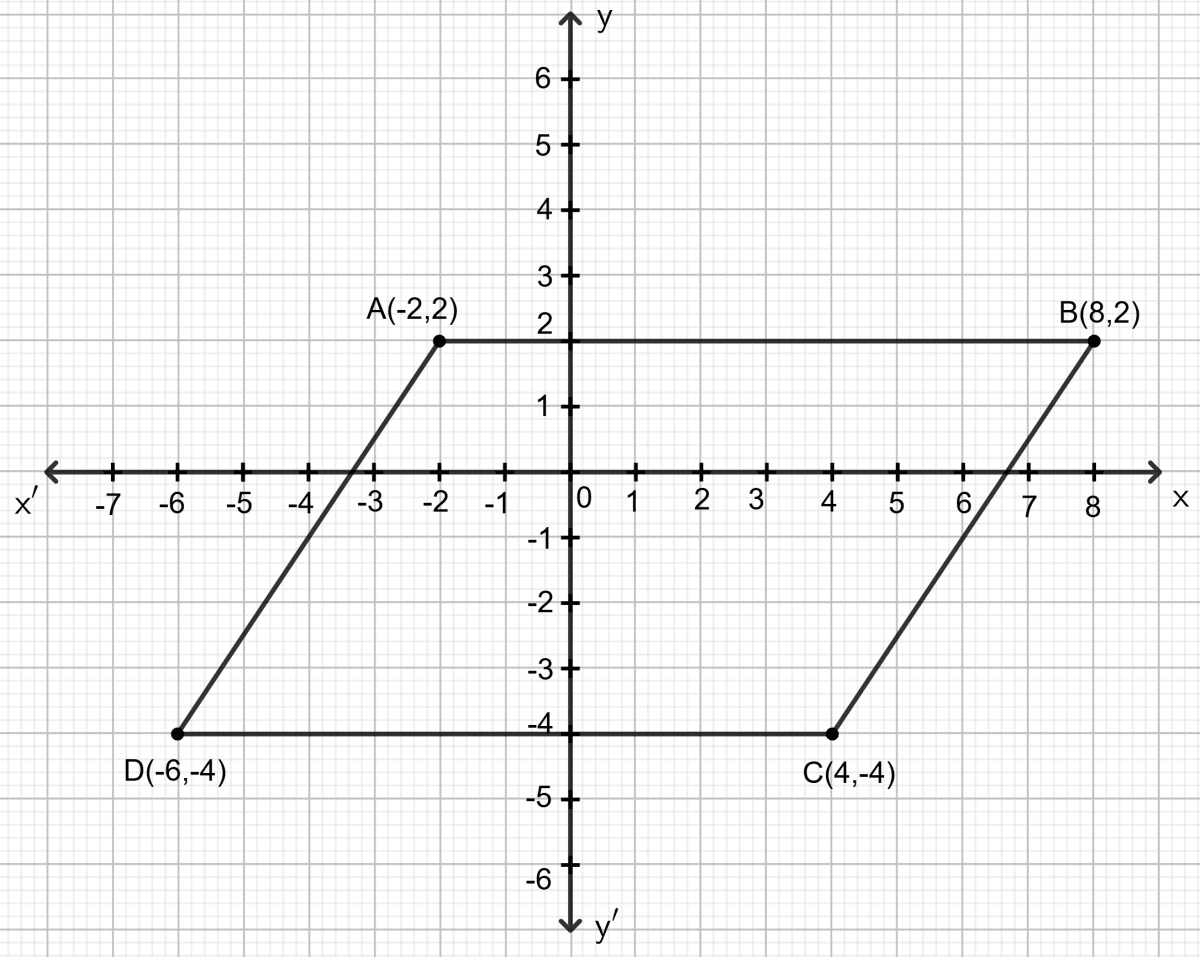Mathematics
A (-2, 2), B (8, 2) and C (4, -4) are the vertices of a parallelogram ABCD. By plotting the given points on a graph paper; find the co-ordinates of the fourth vertex D.
Also, from the same graph, state the co-ordinates of the mid-points of the sides AB and CD.
Coordinate Geometry
6 Likes
Answer
Plot the points A (-2, 2), B (8, 2) and C (4, -4) on the graph paper. Join point A with B and B with C.
From the graph, it is clear that the horizontal distance between the points A (-2, 2) and B (8, 2) is 10 units and the vertical distance between the points B (8, 2) and C (4, -4) is 6 units. Therefore, the vertical distance between the points A (-2, 2) and D must be 6 units and the horizontal distance between the points C (4, -4) and D must be 10 units.
Now, complete the parallelogram ABCD and read the coordinates of point D. As shown on the graph, D = (-6, -4).

The midpoint of AB lies exactly halfway between A(-2, 2) and B(8, 2). On the graph, this midpoint is at (3, 2), as it is 5 units from both A and B.
The midpoint of CD lies exactly halfway between C (4, -4) and B (-6, -4). On the graph, this midpoint is at (-1, -4), as it is 5 units from both C and D.
Hence, D = (-6, -4) and mid point of AB = (3, 2) and CD = (-1, -4).
Answered By
3 Likes
Related Questions
In each of the following, find the co-ordinates of the point whose abscissa is the solution of the first equation and ordinate is the solution of the second equation :
(i) 3 - 2x = 7; 2y + 1 = 10 - .
(ii)
(iii)
In each of the following, the co-ordinates of the three vertices of a rectangle ABCD are given. By plotting the given points; find, in each case, the co-ordinates of the fourth vertex :
(i) A (2, 0), B (8, 0) and C (8, 4).
(ii) A (4, 2), B (-2, 2) and D (4, -2).
(iii) A (- 4, - 6), C (6, 0) and D (- 4, 0)
(iv) B (10, 4), C (0, 4) and D (0, - 2).
A (- 2, 4), C (4, 10) and D (- 2, 10) are the vertices of a square ABCD. Use the graphical method to find the co-ordinates of the fourth vertex B. Also, find :
(i) the co-ordinates of the mid-point of BC;
(ii) the co-ordinates of the mid-point of CD and
(iii) the co-ordinates of the point of intersection of the diagonals of the square ABCD.
Line y + 7 = 0 is :
parallel to x-axis
parallel to y-axis
not parallel to x-axis
not parallel to y-axis